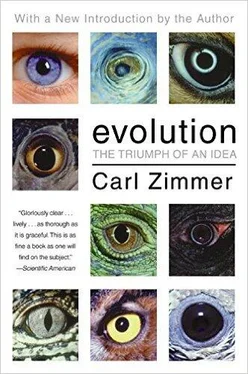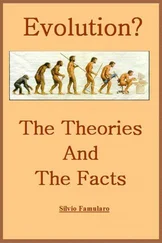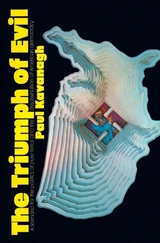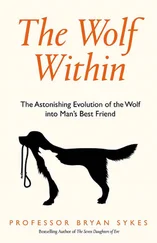Knoll AH, Carroll SB. “Early animal evolution: Emerging views from comparative biology and geology.” Science, 1999, 284: 2129–2137.
Lundin LG. “Gene duplications in early metazoan evolution.” Seminars in Cellular and Developmental Biology, 1999,10: 523–530.
McNamara KJ. Shapes of time: The evolution of growth and development. Baltimore: Johns Hopkins University Press, 1997.
O’Leary M, Uhen M. “The time of origin of whales and the role of behavioral changes in the terrestrial-aquatic transition.” Paleobiology, 1999, 25: 534–556.
Prothero DR, Prothero DA. Bringing fossils to life: An introduction to paleobiology. New York: McGraw-Hill, 1997.
Shankland M, Seaver EC. “Evolution of the bilaterian body plan: What have we learned from annelids?” Proceedings of the National Academy of Sciences, 2000, 97: 4434–4437.
Shubin N, Tabin C, Carroll S. “Fossils, genes and the evolution of animal limbs.” Nature, 1997, 388: 639–648.
Sumida SS, Martin KLM. Amniote origins: Completing the transition to land. San Diego: Academic Press, 1997.
Williams GC. The pony fish’s glow: And other clues to plan and purpose in nature. New York: Basic Books, 1997.
Zimmer C. At the water’s edge: Macroevolution and the transformation of life. New York: Free Press, 1998.
— . “In search of vertebrate origins: Beyond brain and bone.” Science, 2000, 287: 1576–1579.
CHAPTER 7: EXTINCTION: HOW LIFE ENDS AND BEGINS AGAIN
Bowring SA, Erwin DH, Isozaki Y. “The tempo of mass extinction and recovery: The end-Permian example.” Proceedings of the National Academy of Sciences, 1999, 96: 8827–8828.
Burney DA. “Holocene lake sediments in the Maha’ulepu Caves of Kaua’i: Evidence for a diverse biotic assemblage from the Hawaiian lowlands and its transformation since human arrival.” Ecological Monographs, in press.
Chapin FSr, Zavaleta ES, Eviner VT, Naylor RL, Vitousek PM, Reynolds HL, et al. “Consequences of changing biodiversity.” Nature, 2000, 405: 234–242.
Cohen AN, Carlton JT. “Accelerating invasion rate in a highly invaded estuary.” Science, 1998, 279: 555–558.
Daszak P, Cunningham AA, Hyatt AD. “Emerging infectious diseases of wildlife: Threats to biodiversity and human health.” Science, 2000, 287: 443–449.
Dobson AP. Conservation and biodiversity. New York: Scientific American Library, 1996.
Drake F. Global warming: The science of climate change. New York: Oxford University Press, 2000.
Erwin DH. “After the end: Recovery from extinction.” Science, 1998, 279: 1324–1325.
—. The great Paleozoic crisis: Life and death in the Permian. New York: Columbia University Press, 1993.
— . “Life’s downs and ups.” Nature, 2000, 404: 129–130.
Flannery TF. The future eaters: An ecological history of the Australasian lands and people. New York: George Brazilier, 1995.
Gaston KJ. “Global patterns in biodiversity.” Nature, 2000, 405: 220–227.
Holdaway RN, Jacomb C. “Rapid extinction of the moas (Avs: Dinornithiformes): Model, test, and implications.” Science, 2000, 287: 2250–2254.
Inouye DW, Barr B, Armitage KB, Inouye BD. “Climate change is affecting altitudinal migrants and hibernating species.” Proceedings of the National Academy of Sciences, 2000, 97: 1630–1633. Kaiser J. “Does biodiversity help fend off invaders?” Science, 2000, 288: 785–786.
Kasting JF. “Long-term effects of fossil fuel burning.” Consequences, 1998, 4: 55–27.
Kemp TS. Mammal-like reptiles and the origin of mammals. London & New York: Academic Press, 1982. Kirchner JW, Weil A. “Delayed biological recovery from extinctions throughout the fossil record.” Nature, 2000, 404: 177–179. Kyte F. “A meteorite from the Cretaceous/Tertiary boundary. Nature, 1998, 396: 237–239.
Lawton JH, May RM. Extinction rates. Oxford & New York: Oxford University Press, 1995. MacPhee RDE. Extinctions in near time: Causes, contexts, and consequences. New York: Kluwer Academic/Plenum Publishers, 1999.
McCann KS. “The diversity-stability debate.” Nature, 2000, 405: 228–233.
Miller GH, Magee JW, Johnson BJ, Fogel ML, Spooner NA, McCulloch MT, et al. “Pleistocene extinction of Genyornis newtoni: Human impact on Australian megafauna.” Science, 1999, 283: 205–208.
Mooney HA, Hobbs RJ, eds. Invasive species in a changing world. Washington, D.C.: Island Press, 2000.
Myers N, Mittermeier RA, Mittermeier CG, da Fonseca GA, Kent J. “Biodiversity hotspots for conservation priorities.” Nature, 2000, 403: 853–858.
National Research Council (U.S.). Board on Biology. Nature and human society: The quest for a sustainable world. Washington, D.C.: National Academy Press, 2000.
Norris RD, Firth J, Blusztajn JS, Ravizza C. “Mass failure of the North Atlantic margin triggered by the Cretaceous-Paleogene bolide impact.” Geology, 2000, 28: 1119–1122.
Pimm S, Askins R. “Forest losses predict bird extinctions in eastern North America.” Proceedings of the National Academy of Sciences, 1995, 92: 10871–10875.
— . Raven P. “Biodiversity: Extinction by numbers.” Nature, 2000, 403: 843–845.
Powell JL. Night comes to the Cretaceous: Dinosaur extinction and the transformation of modern geology. New York: Freeman, 1998.
Prothero DR, Prothero DA. Bringing fossils to life: An introduction to paleobiology. New York: McGraw-Hill, 1997.
Purvis A, Hector A. “Getting the measure of biodiversity.” Nature, 2000, 405: 212–219.
Quammen D. “Planet of weeds.” Harper’s, 1990, 297: 57–69.
—. The song of the dodo: Island biogeography in an age of extinctions. New York: Scribner, 1996.
Ricciardi A, Maclsaac HJ. “Recent mass invasion of the North American Great Lakes by Ponto-Caspian species.” Trends in Ecology and Evolution, 2000, 15: 62–65.
Rosenzweig ML. Species diversity in space and time. Cambridge: Cambridge University Press, 1995.
Sala OE, Chapin FS, 3rd, Armesto JJ, Berlow E, Bloomfield J, Dirzo R, et al. “Global biodiversity scenarios for the year 2100.’ Science, 2000, 287: 1770–1774.
Shackleton, NJ. “The 100,000-year ice-age cycle identified and found to lag temperature, carbon dioxide, and orbital eccentricity.” Science, 2000, 289: 1897–1902.
Sheehan PM, David E. Fastovsky DE, Barreto C, Hoffmann RG. “Dinosaur abundance was not declining in a ‘3 m gap’ at the top of the Hell Creek Formation, Montana and North Dakota.” Geology, 2000, 28: 523–526.
Simberloff D. Schmitz DC, Brown TC. Strangers in paradise: Impact and management of nonindigenous species in Florida. Washington, D.C.: Island Press, 1997.
Smil V. Cycles of life: Civilization and the biosphere. New York: Scientific American Library/Freeman, 1997.
Stott PA, Tett SFB, Jones GS, Allen MR, Mitchell JFB, Jenkins GJ. “External control of 20th century temperature by natural and anthropogenic forcings.” Science, 2000, 290: 2133–2137.
Thornton IWB. Krakatau: The destruction and reassembly of an island ecosystem. Cambridge, Mass.: Harvard University Press, 1996.
Van Driesche J, Van Driesche R. Nature out of place: Biological invasions in the global age. Washington, D.C.: Island Press, 2000
Vitousek PM, D’Antonio CM, Loope LL, Westbrooks R. ‘Biological invasions as global environmental change.” American Scientist, 1996, 84: 468–479.
Читать дальше












